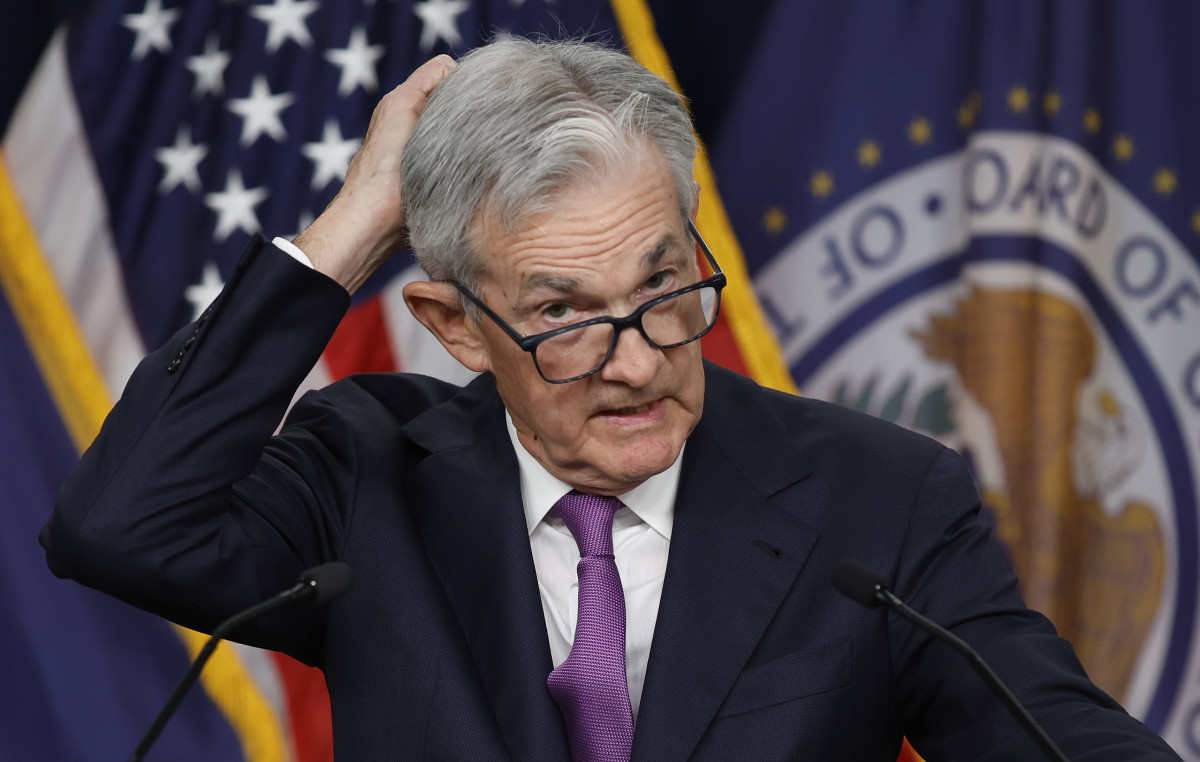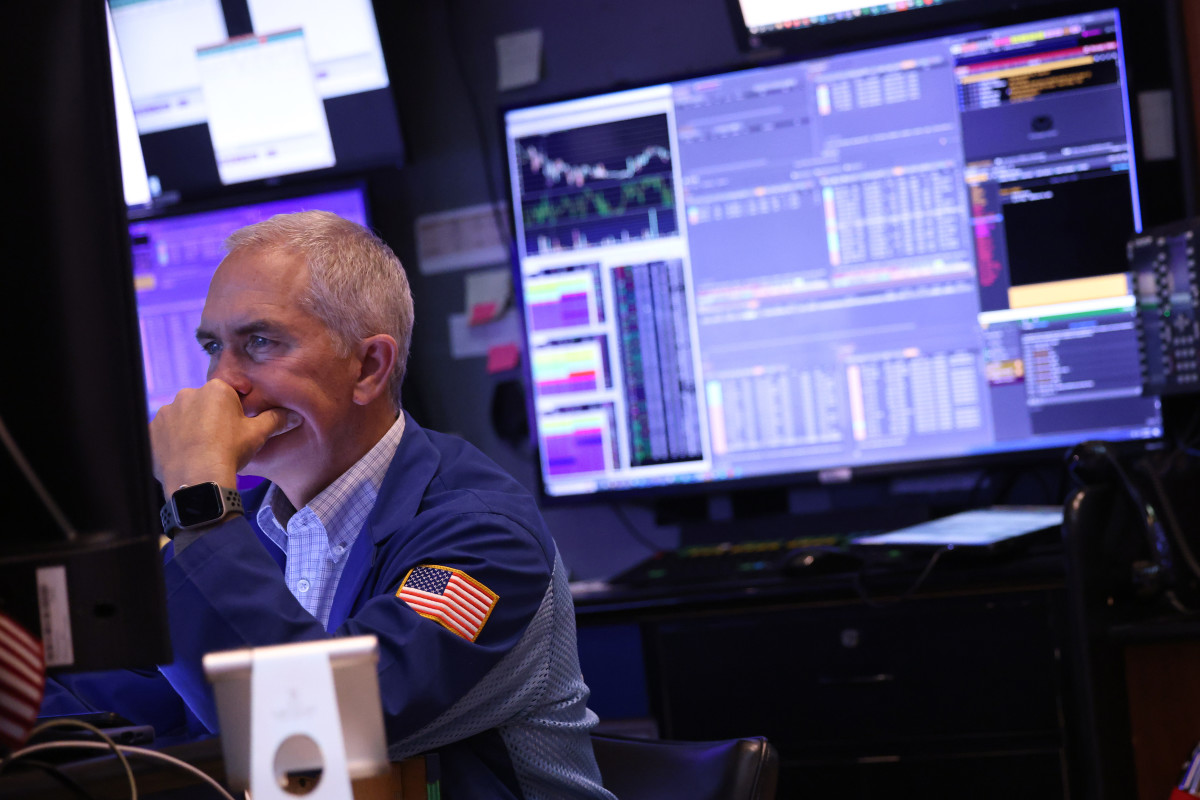
As markets closed on Wednesday, conventional wisdom was something like this: The Federal Reserve may cut interest rates only once this year.
And a number of investors were not thrilled. At the end of 2023, Wall Street was exuberantly talking about as many as seven rate cuts in 2024.
The result was some bumpiness after the Fed's announcement that it was holding its key rate at 5.25% to 5.5% and was in no rush to trim the rate.
Related: As Nvidia climbs 'Old Tech' stocks get AI boost
But by the close, three indexes ended the day at records: the Standard & Poor's 500 Index, with its first close above 5,400; the Nasdaq Composite and the Nasdaq 100 Index. The Dow Jones Industrial Average fell 35 points.
The totality of the close was good news. And of course Fed Chairman Jerome Powell kept insisting that the domestic economy was doing pretty well. He said in his news conference after the Fed released its rate decision, "We have a good strong labor market."
Yet he couldn't deliver a rate cut — none was actually expected.
More important, he couldn't deliver an exact timetable for a rate cut. And he seemed a bit, well, glum about the situation.

What the Fed wants is inflation to be falling on a sustained basis toward 2% a year. That means it moves steadily lower month-to-month to the goal. At best, Powell, the Fed's statement and its dot-plot presentation could only suggest it may take until the end of 2024 and into 2025 to get it.
The dot-plot presentation is part of a series of projections the Fed issues quarterly to show how the central bank is looking at the economy, jobs, interest rates and other measures.
The dot plot shows how the 19 members of the Federal Open Market Committee, who vote on rates and other matters, are looking at the current situation and the future.
The close requires some thought
You could see the frustration in the details of the close.
The Dow was up nearly 373 points right after the open because of the benign Consumer Price Index report. But it lost all that gain and ended the day with a small loss.
Homebuyers were probably cheered because mortgage-rate quotes fell on the CPI report. The rate on a 30-year loan dropped below 7% for the first time since March, according to Mortgage News Daily.
Two more points:
- While the S&P 500, Nasdaq and Nasdaq 100 closed at records, all three gave back roughly a third of their gains on the day by the close.
- Lastly, the S&P 500, Nasdaq and Nasdaq 100 are now technically overbought, with their relative strength indexes all above 70.
RSI is a momentum measure. If a stock or, in this case, an index rises too quickly, it can become vulnerable to a selloff, especially after the RSI level tops 75. Topping 80 means the selling is imminent.
The Nasdaq's RSI at Wednesday's close was above 76. The Nasdaq 100's RSI was at nearly 76. The S&P was nearly at 72.
How did these indexes get so high? Tech stocks, obviously, had a lot to do with it, especially big tech stocks.

Nvidia NVDA is up 153% this year. The VanEck Vectors Semiconductor ETF (SMH) is up 50.4% for the year and 9.4% so far in June.
Broadcom AVGO shares jumped 14.6% after hours after reporting first-quarter earnings that beat estimates. Much of the excitement, Barron's' Eric Savitz noted, was due to gains in sales from artificial-intelligence products: $3.1 billion, up from $2.3 billion in the first quarter and 280% higher year over year.
More AI Stocks:
- Apple's AI launch at WWDC could hinge on something it hates to do
- Analyst revamps Microsoft stock price target despite controversy
- Analysts race to reset HPE stock price targets as AI powers earnings
Apple (AAPL) shares, up 25% since the end of April, have jumped 8.2% this week alone as investors cheered the company's plans to get into artificial intelligence.
Briefly on Wednesday, in fact, Apple's market cap was back to being bigger than Microsoft's (MSFT) .
So, investors should keep an eye on markets because stocks may be getting ahead of themselves.
Seasoned professionals will be doing more than that. They will be looking to buy dips.
An important report on Thursday
Futures trading late Wednesday, however, was suggesting gains at the open for the S&P 500, Nasdaq and Nasdaq-100. Trading in Dow futures suggests a small decline.
There's another big inflation report due before Thursday's open, the Producer Price Index (PPI). The report will offer a second opinion on where prices are headed.
The expectation is it will show wholesale prices rising 2.5%, up from 2.2% in May, with core PPI at 2.4%.
Related: Veteran fund manager picks favorite stocks for 2024







